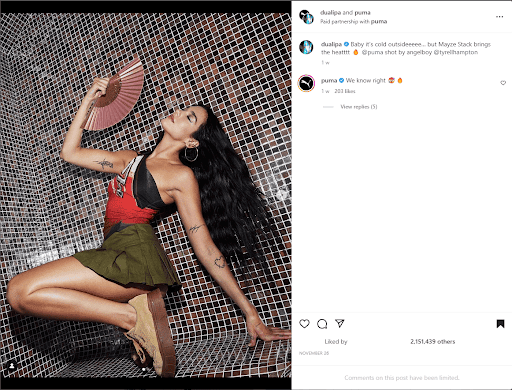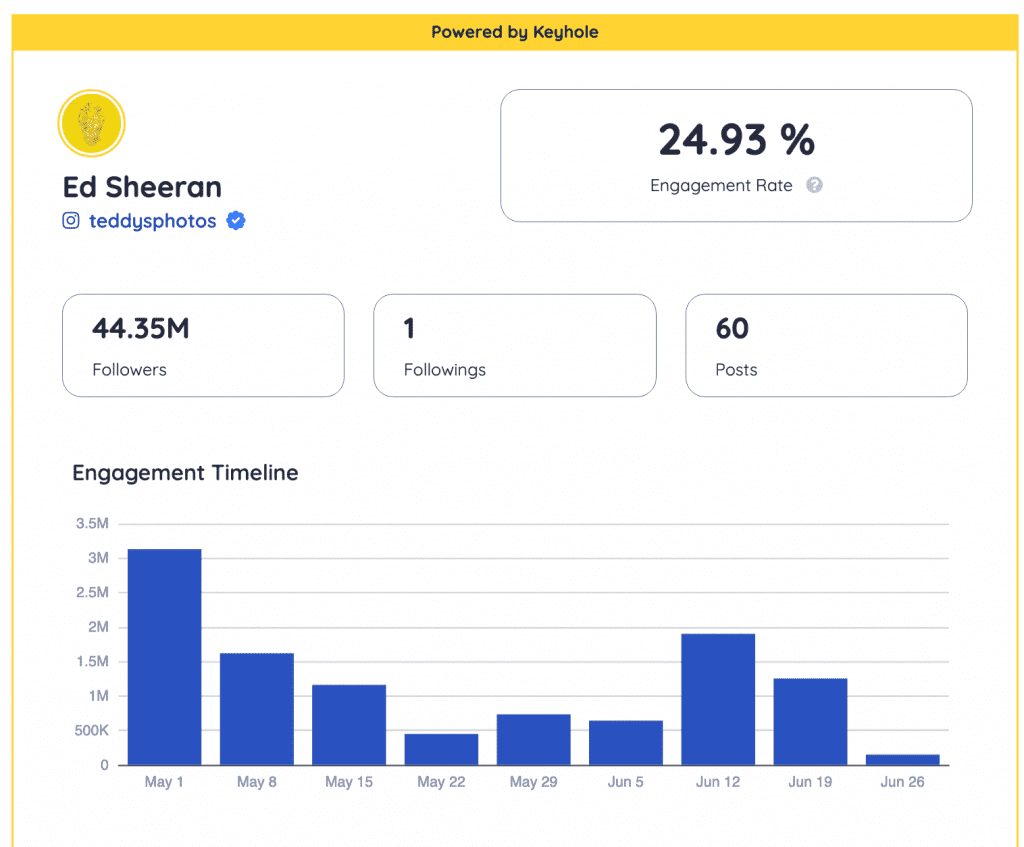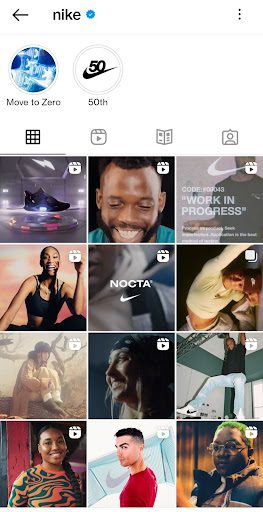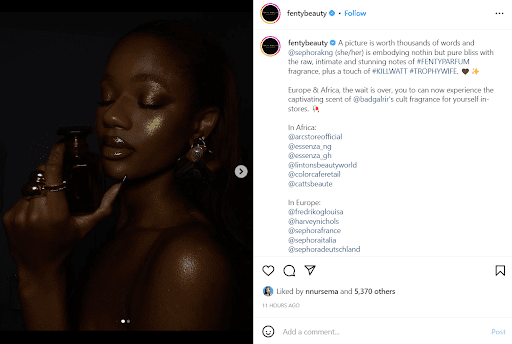Since the inception of reels, more brands use Instagram to establish a reputation in the social space. The reason here is its extensive user base.
According to statistics, the platform boasts over 1 billion monthly users, out of which 90% follow at least on business. 50% of users have also stated that their interest in a brand increases when they see ads on Instagram.
To build brand awareness, Instagram marketing is essential. But engagement is the primary element here — and reels aren’t always enough for that.
Then how do you improve your brand’s engagement rate on Instagram? The best way here is to calculate it with precision and efficiency.
In this blog, we will discuss what Instagram engagement rate is and how to increase it for the best results.
Table of Contents
- What is Instagram engagement rate?
- Why does your Instagram engagement rate matter?
- What is a good Instagram engagement rate?
- How to calculate the Instagram engagement rate?
- [Free] Instagram Engagement Rate Calculator
- 5 Tips to increase Instagram engagement rate
- Keep tabs on your Instagram engagement rate with Keyhole
- Frequently Asked Questions
What is Instagram engagement rate?
Instagram engagement rate is the quantitative measure that calculates what percentage of your total followers have interacted with your Instagram posts. It accounts for the number of likes and comments on a post and your overall follower count.
Sometimes Instagram engagement calculator also considers the number of impressions, saves, and shares a post receives.
Why does your Instagram engagement rate matter?
Here are some reasons brands should focus on increasing Instagram engagement:
When you drive good engagement on your Instagram profile, your target audience notices it. If you have a significant number of Instagram comments, likes, and views on your posts, it makes the audience curious.
Not only your target market, but high engagement can also bring people who are not your target viewers. Remember, it’s always good to add new followers and fans to the list.
For example, Puma focuses on sports and fitness shoes and apparel. But it does not limit its fan base on Instagram to athletes and fitness enthusiasts.

2. Remain relevant
A high engagement rate keeps your brand relevant on a crowded platform like Instagram. It pushes the Instagram algorithm to prioritize your content on the platform.
This way, you constantly reach more and more of the right people who would be interested in your brand. A high engagement rate also makes content go viral and reach a wide audience base. It can start online conversations on your brand and drive interest in your products.
3. Gauge audience interest
Examining the engagement rates helps you gauge how your followers are responding to your content. High engagement in your content signifies that your viewers are resonating with your posts. That means your Instagram content strategy is working.
Low engagement rates tell you that there are areas for improvement. It allows you to identify your weaknesses and work on them to create a successful Instagram marketing campaign.
Engagement tells you how your audience is reacting to your social media strategy. When you measure the engagement rate, you get a quantifiable image of your social media marketing strategy’s success. This drives you to bring necessary changes and do consistently better with each analysis.
Now that you know its importance, the next step is to understand what a good Instagram engagement rate is.
What is a good Instagram engagement rate?
A good engagement rate on Instagram is not a uniform concept. It depends on the industry you are active in, your products, your targeted audience, and your business model. It varies for B2B and B2C and depends on other additional factors.
However, according to reports, the average Instagram engagement rate is 0.67%.
While as per research by Social Insider, travel is the most engaging industry on Instagram, boasting an engagement rate of 1.41%.
The brands dealing with arts and crafts have an average Instagram engagement rate of 0.53%. The automotive industry typically gets an average engagement rate of 0.83.% on Instagram.
Now, the next step in the process is to learn how to calculate your Instagram engagement rate. This will help you assess whether your performance is above or below average.
How to calculate the Instagram engagement rate?
Here are some of the most popular formulas to calculate the Instagram engagement rate for your brand.
1. Engagement rate by reach (ERR)
The most common formula of them all, this method calculates your brand’s Instagram engagement rate based on your reach on the platform. This formula measures the segment of the audience who engages with your content after seeing it.
The following formula here applies to a single post:
Engagement rate by reach = Total number of engagements per post/Reach per post * 100
For example, suppose Nike has 51,759 likes on their most recent post.

Here they will calculate the likes and the comments to determine the total engagement rate per reaction on this post.
The next step is to calculate the average engagement rate across multiple posts. Here, you add up all the ERRs from the posts you want to evaluate. Then divide that by the number of posts.
Average ERR = Total ERR / Total posts
For example, if post 1’s total ERR is 5.6 and post 2’s is 6.2, then the average ERR will be:
Post 1 (5.6%)+ Post 2(6.2%)/2 = Average ERR (5.9%)
Here are the pros and cons of using this method:
- Pros: Not all your followers come across your content. Here, the reach can be a more accurate measurement than the follower count. This formula includes non-followers who may have found your content through shares, hashtags, and other means. Hence, the results are more precise.
- Cons: Reach is not a very stable metric. It fluctuates for various reasons and is difficult to control. A very low reach can lead to a disproportionately high engagement rate and vice versa. So, keep this in mind before you make this your primary engagement measurement.
2. Engagement rate by posts
This formula measures engagement based on followers on a specific post. It shows you the rate at which followers engage with your content. While ER by post is like ERR, it does not use reach for measurements. This formula is popular with Instagram influencers.
The formula for ER by post is:
ER post = Total engagements on a post/Total followers X 100
To calculate the average engagement rate by posts, add up all the posts and divide it by the number of posts.
Average ER by post = Total ER by post / Total posts
For example, if post 1 has 7% engagement and post 2 has 4% engagement, the average ER by post here is post 1 (7%)+ post 2 (4%)/2 = 5.5%
Here are the pros and cons of using this method:
- Pros: Unlike ERR, ER by post formula replaces reach with followers. This is usually a more stable metric on Instagram.
- Cons: ER by post does not account for viral reach and cannot provide a full picture. With your follower count going up, there can be instances of your engagement dropping off slightly. Thus, it is important to see this stat alongside follower growth analytics.
3. Engagement rate by impressions
If you are running paid ads on Instagram, engagement rate by impressions is the most useful metric for you. Reach measures how many people see your content. But impressions examine the frequency of a post appearing on a screen.
Here is the formula to measure ER by impressions:
ER by impressions = Total engagements on a post / Total impressions X 100
To calculate the average, divide the sum of impressions by the number of posts you want to measure.
Average ER impressions = Total ER impressions / Total posts
Here are the pros and cons of using this method:
- Pros: This formula comes in handy when you’re running paid ads and want to examine progress based on impressions.
- Cons: As this engagement rate equation uses impression as the base of calculation, it turns out to be lower than ERR and ER post equations. Impressions can be inconsistent. Thus, ensure you use it along with reach for best results.
4. Daily engagement rate
If you are aiming for long-term Instagram engagement analysis, you must include a daily engagement rate in your manual. This formula calculates how often your followers are engaging with your account daily.
While engagement by reach measures engagement based on the maximum exposure, the reach can be inconsistent. Here, the daily engagement rate can come to your rescue as a supporting stat.
Here is the formula to measure daily ER:
Daily ER = Total engagements in a day / Total followers X 100
To determine the average daily ER rate, use the following formula:
Average Daily ER = Total engagements for x days / (x days X followers) X 100
For example, let’s say you are measuring average daily engagement for 40 days. Your following is 600. And the total engagement for 40 days is 50000. So the calculation here would be:
Average daily ER = 50000/(40X600)X100 = 0.020%
Here are the pros and cons of using this method:
- Pros: If your goal is to understand how often your followers interact with your account daily, this equation is very useful. It takes engagements on both new and old posts into the equation and gives you quite an extensive picture. You can also customize this formula to fit specific cases. For example, if you only want to measure daily likes on the brand’s profile, you can adjust the “total engagements” accordingly.
- Cons: Despite its usefulness, ER by impression leaves significant room for error. For instance, the same follower may engage with a profile 10 times a day, while 10 followers may only engage once. This formula does not adjust to this anomaly.
Engagement can also vary with the number of content you post daily. Hence, we suggest considering your daily engagement against the number of posts.
5. Engagement rate by views
If your Instagram marketing primarily depends on video content, ER by views is the perfect equation for you. This calculation will tell you how many viewers choose to engage with your content after watching your videos and reels.
Here is the formula for calculating ER by views:
ER by view = Total engagements on a video post / Total video views X 100
To calculate the average, use the following formula:
Average ER view = Total ER view / Total posts
For example, if your total ER view for 20 posts is 4000, then your average ER view is: 4000/20 = 200.
Here are the pros and cons of using this method:
- Pros: Good for brands depending on reels and video content.
- Cons: Calculations often include repeat views from a single user
Now that you know how to calculate your Instagram engagement rate, here’s how you can work towards increasing it.
[Free] Instagram Engagement Rate Calculator

5 Tips to increase Instagram engagement rate
1. Maintain brand consistency
To establish an identity for your brand on Instagram, you must portray an easily recognizable image. To do that, maintaining consistent branding is key.
First things first, your username has to be the same or similar across all your platforms.
Visual consistency is important as well. The format should be the same across all your posts. Let’s look at Nike’s profile, for example.

Whenever they post a picture, the filter and quality remain the same throughout the profile. The backgrounds they use are similar as well.


For typography, Nike uses the same font and similar background for all its posts. They also use the same filter for every picture they post.
With a consistent aesthetic across your Instagram profile, your brand becomes more recognizable and appealing to your audience. It helps you build brand authority.
2. Post routinely and regularly
After completing thorough research on your target audience, make sure you get a hold of their reach by posting regularly. This is something every top brand swears by.
Analyze your competitors and see what frequency works for your niche on Instagram. Try to embody that in your brand’s Instagram marketing. When you decide on a schedule, stick to it — be it one post every day or three posts a week.
You can use Keyhole’s publishing feature and schedule unlimited posts to multiple social media platforms. It will in turn gather insights like your optimal time to post, most engaging media type and post type, top posts, etc.
3. Create catchy captions
Your captions have to be attention-grabbing. You can go with short, witty, and light-hearted captions that reflect your brand voice. If you are posting long captions, make sure it tells a story and is easy to read.

For example, if you see Fenty Beauty’s Instagram posts, it always includes captions that celebrate the beauty of all shapes and colors. These are very much reflective of their brand image and grab attention with their smart wording.
If you want to stay relevant on Instagram, using trending hashtags is a must. It helps you frequently appear in the explore section and drives organic traffic.
However, using any trending hashtag would not work. Instagram captions can hold up to 30 hashtags per post. It has to be a mix of popular and specific, long-tailed keywords.
For example, if you’re running an Instagram for your tourism company. You should use common hashtags like #travel, #beach, and #mountains.

For example, here is a shoe brand that’s primarily active on Instagram. They dedicated a pair of shoes in honor of the late Kobe Bryant. The hashtags they used in the caption apply to their brand and are still trendy and appealing.
5. Engage with your followers
To establish a strong Instagram presence, you need to engage with your audience proactively. They must be able to reach you through your Instagram posts and rely on you with any doubts and questions.
Many top brands conduct Q&A sessions through their stories. You can also engage with your customers through their comments. You can answer their queries or can just thank them for engaging with your content.
Keep tabs on your Instagram engagement rate with Keyhole
To make a strong identity on Instagram, your engagement rate has to be top-notch.
For that, you need to monitor your engagement rate based on different formulas and metrics. This will tell you whether your Instagram marketing strategy is succeeding, or needs a little polishing.
However, remember that no metric is consistent, and the results will vary. Thus, make sure you compare the metrics with each other. This will ensure more precision in the results.
But measuring multiple metrics for different posts is not always workable with manual methods. Here, Keyhole’s superior analytical capabilities can help you out.
With its social listening features, you will never miss a relevant trend. The powerful analytics will not only assess your performance but also will benchmark it against your competitors.With Keyhole, you will always thrive for improvement and outperform your contenders in no time. To up your Instagram marketing game, start your free trial with Keyhole today.
Related Articles:
A Guide On How To Do An Instagram Competitor Analysis In 5 Steps
Nike’s Social Media Strategy: A Deep Dive
Frequently Asked Questions
Is a 40% engagement rate good on Instagram?
The average engagement rate on Instagram is 0.67%. However, anything above 6% qualifies as a very high engagement rate.
How can I increase my Instagram engagement rate?
There are several measures you can take to enhance your engagement rate on Instagram. Try to be more consistent with your posting. Use catchy captions and relevant hashtags. Make your profile look good and reflective of your brand image. Don’t forget to engage with your audience frequently.
What is the best time to post on Instagram?
There is no “one size fits all” trick for the best posting frequency. It depends on the industry and the target audience. To get a better idea, you can run a competitor analysis to see what schedule worked for them.